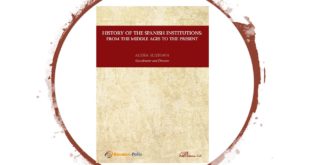The problem for historical analysis is, first, that there is no single or absolute «common path» for countries, even for West European countries, and the history of every country is in some key respects different from that of other countries, just as each human being is, in certain respects, different from every other human being. All countries can be shown to have idiosyncracies of their own, as well as singular features in their historical development.
A second problem concerns the standard or unit of comparison. For European countries this is normally taken to be «modern Europe» or «the modern West,» but this is vague, since there are different kinds of West European countries, some more successful in the onset or rate of modernization, others less so, some having enjoyed a longer history of representative government, others a shorter one.
The two most «different» countries in their variation from any perceived West European norm must surely be England and Russia, the first for its relative success in modern times, the second for its persistent political underdevelopment and authoritarianism and its constant discarding of only partially successful development models. In between we may find any number of national variations, some rather nearer England, some nearer Russia, a few perhaps almost equidistant.
From the later seventeenth century onward, the standard by which Spain was generally found wanting was not really «Europe» or «the West» (though such terms would later be used), but rather the development of the first modernizing societies of northwestern Europe, especially England and Holland, and later France and certain other parts of west-central and northern Europe. Initially this involved scarcely as much as one- quarter of Europe as a whole, for in fact the experience of Spain during the seventeenth century was nearer that of the greater part of Europe than was the rise of England and Holland. The northwestern countries were becoming exceptional, while Spain was comparatively unexceptional, except in comparison with them.
Slow modernization nonetheless became a semi-permanent feature of Spanish affairs, to which by the second half of the nineteenth century had been added severe political problems of internal unity, stability and civic development. By that time, certain other countries had increased their own economic development, while a marked acceleration of Spain’s growth did not take place until the early twentieth century. Then, just when it seemed as though major improvement had been achieved, the Civil War and the Franco regime placed everything in question once more, though the latter’s tourist industry turned a perceived negative into a positive by selling the slogan «Spain is different» for a number of years.
The long-delayed economic modernization finally occurred, however, and soon was followed by successful and stable political democratization, as well, so that by the 1980s there set in the strongest mood of national self-confidence in at least two centuries. The new economic historians began to produce data to suggest that, at least during some periods, the failure in economic growth had been somewhat exaggerated, and there developed a kind of counter-myth that Spain was not only not so different, but was simply a country like any other, this last a kind of distortion of its history as great as the notion of perpetual incompetence and failure.
Spanish historiography expanded enormously in the later twentieth century, but devoted limited space to other countries, so that serious attention to the place of Spain in comparative history still did not receive the kind of sustained attention that would have been illuminating. Hence the importance of this new set of comparative studies directed by Nigel Townson, which compare and contrast key aspects of Spanish affairs during the nineteenth and twentieth centuries with other parts of Western Europe. José Alvarez Junco examines «el debate sobre la nación,» María Cruz Romeo Mateo studies the role of civil war and violence in the nineteenth century, Edward Malefakis treats the Second Republic, Townson himself studies the problems of anticlericalism and of the Franco regime, and Pamela Radcliff discusses the place of the Transition in the expansion of global democratization. The key dimension missing here is economic development and modernization, though this is the one major area that has already received major attention elsewhere. The other major gap is comparative discussion of revolution and civil war in the twentieth century, though this will apparently be remedied in a subsequent revised and expanded edition.
José Alvarez Junco has probably contributed more to the historiography of identity and nation in Spain during the past fifteen years than any other scholar, a task executed with distinction in both Spain and the United States. During the decade of the 1990s he was the first Príncipe de Asturias Professor of Spanish History at Tufts University in Boston, role that he carried out with a combination of energy, zeal and effectiveness, becoming in North America a unique catalyst for the historiography of Spain whose like had never been seen, someone whose absence in the North American academic world has been sorely missed in the twenty-first century.
His chapter in the present work presents a magisterial analysis of the problem of identity and nation in Spain since the Middle Ages that should be read by everyone interested in the problem. Alvarez Junco points out both the key similarities and the distinct differences between the cases of Spain and France, the continental European paradigm. Conversely, the classic «anti-Spain» in modern Europe was Great Britain, which makes it all the more paradoxical, as he goes on to say, that, when one finally reaches the end of the twentieth century, «dentro del contexto contemporáneo, el país en el que parecen encontrarse, en principio, rasgos comparables a los españoles, es el Reino Unido,» in terms of a union of kingdoms which led to an empire, followed in more recent times by both a violent secessionist struggle and peaceful movements toward autonomy. At the same time, he recognizes certain unique and contingent aspects of the conflict over autonomy in twentieth-century Spain, concluding that «lo que parece indiscutible en el caso español es que la situación actual es producto mucho más de las circunstancias de las últimas décadas que de antecedentes históricos de largo alcance.»
In examining civil war and other violent political conflicts during the nineteenth century, María Cruz Romeo Mateo finds that there were two Western and European paths or patterns of political development, the north-northwest European pattern of compara- tively peaceful evolution, and the variable patterns of all the rest of the continent, subject to considerable disorder and violence, the degree of which varied from country to country. Even England was different during that period not because its system developed without violence, but because it precociously completed its own cycle of violence two centuries earlier when the country underwent a massive civil war (1642-1648). Nor can this northern» pattern be extended to English-speaking countries as a whole, since the United States underwent the most extreme of all the nineteenth-century civil wars, proportionately even more bloody than the First Carlist War in Spain.
In many ways, Spanish affairs offered a standard variation on the pattern of France, which led all the large continental countries in political development but episodes of extreme violence between 1792 and 1871, two of which were proportionately more severe than anything seen in Spain in that era. Political executions during the First Carlist War could not be remotely be compared with what went on in France in 1793-94 and 1871. Given the long periods of authoritarian rule in France, as she points out, between 1833 and 1923 it was underdeveloped Spain that lived more years under a form of parliamentary government.
Edward Malefakis discusses the experience of the Second Republic, which he places within the context of the new republics in Europe after World War I. This is the correct perspective, but he finds the Spanish Republic to have been completely exceptional because of the range and ambition of its reformist program. To some degree that also is accurate, but begs the question as to the appropriateness of the Republican reforms and their effectiveness, both short- and long-term, and also indulges in the standard exercise of judging the left by its ideals, while judging the right by its deeds. Malefakis has to admit that in practice the reforms did not always work out well, and he might have done well to inquire more seriously into the record of the interwar Polish republic, perhaps not quite so bleak as his account indicates. The biggest gap in this chapter is the failure to evaluate the
Republic as a revolutionary process within the perspective of the revolutions of postwar Europe.
Townson’s discussion of anticlericalism and secularization is penetrating and up-to- date, constituting an excellent analytic summary of the estado de la cuestión. He concludes that Spain was indeed singular in both the conservatism of its Church leadership and practices, and in the fact that Catholicism continued to enjoy such a privileged position until 1931. The conflict between religion and anticlericalism in Spain nonetheless bore considerable similarity to developments in other Catholic countries. Only Belgium and Austria avoided major conflict, at least down to 1933, so that the difference of the Spanish case was a matter of timing and of degree, more than principle, at least until 1936, when the slaughter of the clergy and also of laymen in Spain was greater both absolutely and proportionately than in Europe’s other case of maximal severity, that of France in 1793-94.
All the dictatorships of interwar Europe and the era of World War II revealed special national characteristics, and indeed reveled in them, but they represented the dominant trend in European affairs on the eve of World War II. Thus Townson reminds his readers that between 1936 and 1942 Franco did not constitute some peculiar Iberian anomaly but had placed his regime at the cutting edge of the new political changes in Europe. For a number of years his regime was much more typical than atypical of the conditions in which most continental countries were living. The regime’s later anomalousness was simply due to its survival, lasting well into the era after World War II, but Townson further points out, correctly, that the first decade and more after 1945 was a time of considerable uncertainty with regard to democratization, as half the continent fell under the control of totalitarian systems much more oppressive and longer-lasting than Franco’s dictatorship, while the consolidation of democracy even in such countries as France and Italy was at first uncertain. Beyond that, much of this excellent essay is devoted to exploding the myth that between 1945 and 1975 Spain was «isolated» from Europe under a primitive, unchanging dictatorship. Townson does an excellent job of analyzing the ways that the regime and, even more, the country’s society, culture and economy evolved in a manner increasingly analogous to that of democratic Western Europe, even while the personal dictatorship remained intact. This profound evolution was, after all, what made possible the Transition, which would otherwise have been incomprehensible and indeed impossible.
Pamela Radcliff concludes the book with a stimulating analysis of the place of the successful Spanish transition within the world’s «third wave» of twentieth-century democratization, a process that Spain and Portugal are correctly credited with having initiated. Moreover, since nearly all this was accomplished with minimal violence, as in
Spain, many commentators have credited the «Spanish model» not merely with initiating the process historically, but also with providing a kind of political blueprint. This Radcliff finds an exaggeration, presenting a skillful discussion of the diverse literature and various theories treating democratization that have appeared in the past three decades. In fact, a variety of different patterns may be found, and there has been even greater variation in the degrees of consolidation of democracy, as well. Her conclusion is that with regard to late twentieth-century democratization in Europe and elsewhere, Spain was both «typical» and «exceptional.» In this case the exceptionality has been clearly positive rather than negative, exceptional in terms of initiating the process historically and also, to some extent, in achieving greater early consolidation.
This is arguably the most analytically intelligent book in contemporary history to have appeared in Spain in recent years. There is no equivalent comparative study of Spanish affairs in the nineteenth and twentieth centuries. Though its arguments are complex, each chapter is clearly written and, when carefully read, can be understood by those who seek coherent contextualization of the country’s history.
The book deserves wide attention both among professional historians, most of whom lack the perspective which it offers, and among all those seriously interested in contemporary Spanish history.
- España
 Kosmospolis Revista digital de Historia, Política y Relaciones Internacionales kosmos-polis
Kosmospolis Revista digital de Historia, Política y Relaciones Internacionales kosmos-polis






